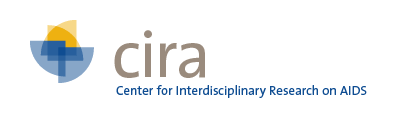| Title | Incidence of anal cytological abnormalities in a cohort of human immunodeficiency virus-infected women. |
| Publication Type | Journal Article |
| Year of Publication | 2003 |
| Authors | Durante, Amanda J., Ann B. Williams, Maria Da Costa, Teresa M. Darragh, Kaveh Khoshnood, and Joel M. Palefsky |
| Journal | Cancer epidemiology, biomarkers & prevention : a publication of the American Association for Cancer Research, cosponsored by the American Society of Preventive Oncology |
| Volume | 12 |
| Issue | 7 |
| Pagination | 638-42 |
| Date Published | 2003 Jul |
| ISSN | 1055-9965 |
| Keywords | Adult, AIDS-Related Opportunistic Infections, Anal Canal, Anus Diseases, Cohort Studies, Female, HIV Seropositivity, Humans, Middle Aged, Papillomaviridae, Papillomavirus Infections, Prevalence, United States |
| Abstract | Little is known about the natural history of anal human papillomavirus (HPV) infection in HIV-infected women because, to date, no longitudinal studies have been reported in the scientific literature. This article estimates the incidence of anal cytological abnormalities in a cohort of HIV-infected women. It also examines potential risk factors for the development of an anal cytological abnormality. A cohort of HIV-infected women underwent interview, anal cytology, and anogenital HPV DNA testing. Women with a normal baseline anal cytology were followed for the development of an anal cytological abnormality. The incidence of an abnormality was calculated. Survival analyses were performed to examine risk factors for the development of an abnormality. Fourteen of 100 HIV-infected women had an abnormal anal cytology at baseline. Among the 86 women with a normal baseline cytology, the incidence of an abnormality was 22 [95% confidence interval (CI), 14-33] per 100 person-years. In a multivariate analysis, women were at increased risk if, at baseline, they had a CD4+ T-cell count of <500 cells/mm(3) [relative hazard (RH) = 4.11; 95% CI, 1.18-14.25], high-risk type anal HPV infection (RH = 2.54; 95% CI, 0.91-7.14) or were cigarette smokers (RH = 3.88; 95% CI, 1.12-13.42). The incidence of anal cytological abnormalities was high among this cohort of HIV-infected women, indicating that they are at high risk of anal squamous intraepithelial lesions. HIV-infected women are likely to be at higher risk than their HIV-uninfected counterparts because immune suppression conferred substantially increased risk. Continued research on the association between smoking and the development of squamous intraepithelial lesions in HIV-infected women is warranted. |
| DOI | 10.1111/j.1542-2011.2011.00028.x |
| Alternate Journal | Cancer Epidemiol. Biomarkers Prev. |


